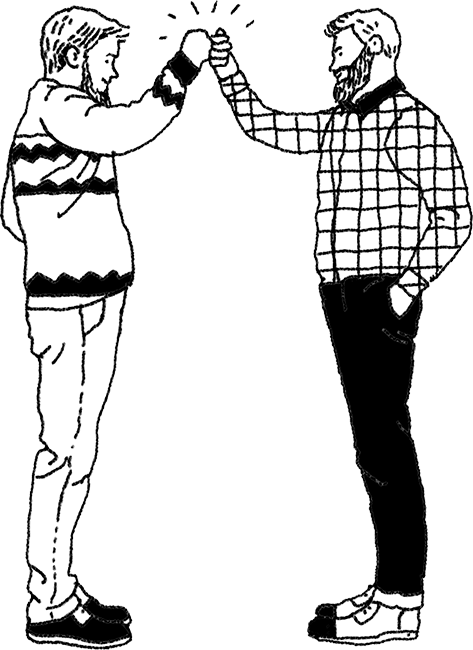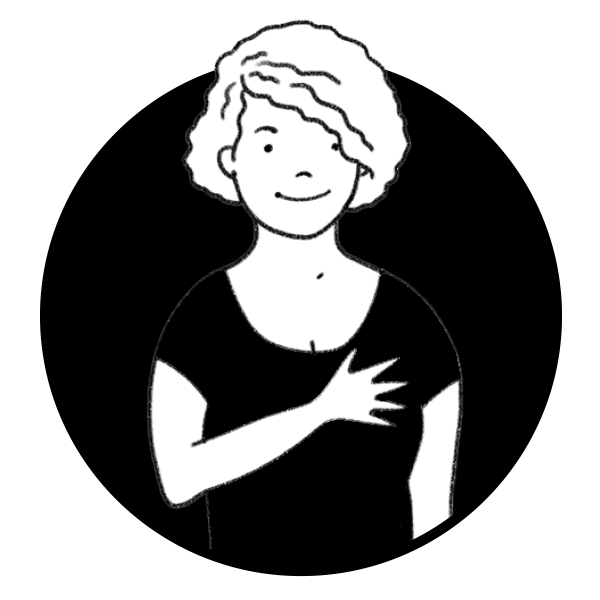I’ve been thinking about the different ways that we can get creative
…and realised (of course!) that there are different states that we can get our minds tuned into.
Each state is an alternative way into creativity and problem solving, and might work for different types of problem solving or invention, or different types of people.
The stimulated state!
This state can happen when you are a mixture of nervous/apprehensive and excited/anticipating something good. Like the beginning of a party, that point when you are looking forward to what unfolds, but you also want to down a few quick drinks to steady the nerves…
…I think our minds are very alive to possibilities at that point, and if someone comes along with some good banter, and some original thinking, it can really help to ‘light up’ your own mind and get you thinking creatively…
…I’ve experienced it myself watching an example of using improv to stimulate idea generation. I was at an AQR conference and we, the audience, got to watch 4 amazing actors improvise around themes we’d shouted out… I was so in awe of the creativity I was experiencing it got me more open to new ideas and made me feel braver about what I was thinking too…
… I don’t think we have to do improv in workshops to get everyone in a stimulated state, but I do think doing something that feels a little bit edgy and a little bit brave particularly at the start of a workshop session could reap some real rewards. You are looking for a little bit of discomfort, but just a little, so that people feel a bit exposed, a bit excited, but ultimately safe enough to have a go… and as the facilitator the key here would be to lead, to put yourself out there.
The reflective state
The stimulated state feels like it will happen in a group where there’s a lot of energy in the room, a lot of laughter, noise…
…but the opposite experience can really work wonders.
This weekend I went to an art exhibition and started taking photos, because at a certain point I saw something visually that I thought could really work well to make powerpoint slides more interesting. A bit later I saw Picasso being quoted “we are what we keep”, which was totally relevant to a project I’m doing, and also another one of those ‘we are what…’ ideas (I’ve got a card on my notice board that says ‘we feel what we think’, and I know I am what I eat!).
I think I had got myself into a reflective state and as a result my brain was starting to make connections to all sorts of other things going on in my life.
I think we should build in reflective time into workshops… often ideas (from the morning session in a day workshop) are pinned up on the walls for a quick tour after lunch… but what if we actually spent a little longer making our ideas into a proper ‘gallery’ that participants could spend time reflecting on, really getting creative about?
The hive mind
I went to the football this weekend too. (Get me, very eclectic) and that reminded me of the power of the group. Football chanting, when done right, is incredibly powerful…thousands of voices all singing a simple idea, all in time, all on the note. It makes you feel powerful, and reminds you that when we work as a group rather than as individuals we can be so much stronger.
There should be space and time given over in a workshop to help people tune into the team ethos, and to start to work as a group for the group. We can do that by finding a rhythm or doing a physical exercise that encourages us to synchronise and get into the same mental space. Weird as it sounds holding hands and standing in a circle can be enough to help our individualist self take a back seat and become part of the group…
Giving people a group identity (even a temporary one) can also help, a set of values that are ‘us’ to work around.
Exercises using a group mindset probably need to happen earlier rather than later in a workshop session (so that people are carrying around too many blocks to being part of the group!). I could see this happening early afternoon at the point where people want to follow a leader, lean into thinking, be part of a group rather than stand out from the group.
And just like the ‘stimulated mind’ the group mind often needs a leader to set the tone, beat the drum, get the rhythm going…
Individualism and problem solving
Creativity is as much the result of individual genius as it is uber power of the group. AND some things (like intricate detail, or finishing off an idea) don’t work very well in a group. There should always be space for people to generate thinking on their own away from the group because that’s where some people do it better and that’s what some exercises need. I would also advocate for a team-within-a-team approach where a small group (sometimes of only one person) takes the creative idea and polishes it, before re-presenting the idea to the group as a ‘grand finale’…
And so…
Perhaps the best workshop adds different states of mind into the mix, giving different creative processes a chance to burst, or emerge or gently whisper the idea that is ready to become realised…
My plan for the ideal workshop would be:
DAY ONE – CREATING IDEAS
- warm up with laughter and improvisation to generate ideas and create excitement (day one, morning)
- go for lunch and have a walk – to help with personal reflection and to get away from the group and re-charge (if necessary)
- do a hive-mind exercise in the afternoon after lunch, where everyone is encouraged to work together, following the same rhythm and beat
- (meanwhile) ideas from the morning session are being put together in a gallery space, for the final creative session of the day where participants ‘reflect and connect’ to identify * key ideas/ themes that resonate and feel like they have potential (so workshops need more than one facilitator)
AFTER DAY ONE – WORKING UP IDEAS
- idea playbook… key team members then take away starter ideas to develop, turning back to the project objectives, thinking realistically about the ideas, adding their own sense of what the idea should be…they have a week or so to refine and work up ideas…
A WEEK LATER – FRESH EYES ON REFINED IDEAS
- which then get revealed in the grand finale! A high energy session (early one morning) where ideas are paraded, voted on, built on and celebrated by the whole team… always good to end on a high note…



